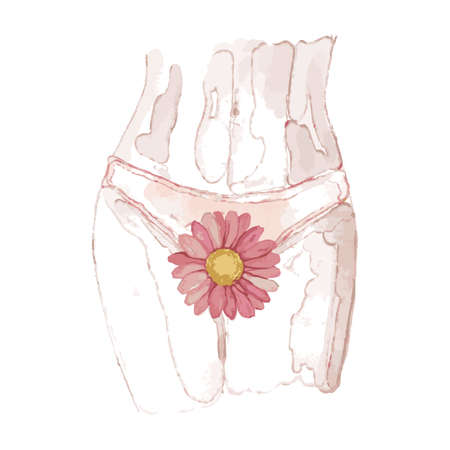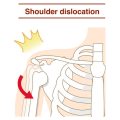Introduction to Patellofemoral Pain Syndrome
Patellofemoral Pain Syndrome (PFPS), often referred to as “runners knee,” is a prevalent musculoskeletal condition encountered across the United Kingdom, affecting individuals of varying ages and activity levels. In the context of the NHS, PFPS represents a significant cause of anterior knee pain, frequently prompting both GP consultations and specialist referrals. The syndrome is characterised by diffuse pain around or behind the patella, typically exacerbated by activities such as climbing stairs, squatting, or prolonged sitting—common daily tasks for many in the UK workforce and student population. Epidemiological studies have indicated that PFPS accounts for up to 25% of all knee injuries presenting in sports medicine clinics, but it also affects those with sedentary lifestyles, underlining its broad impact. The burden of PFPS extends beyond physical discomfort; it can restrict mobility, limit participation in recreational and occupational activities, and negatively affect mental well-being due to persistent pain. Early recognition and appropriate intervention within the NHS framework are crucial in mitigating the long-term consequences associated with this condition. As such, understanding the clinical presentation, epidemiology, and impact of PFPS within the UK setting provides an essential foundation for effective diagnosis and management strategies tailored to local needs.
2. Aetiology and Risk Factors in the UK Population
Patellofemoral Pain Syndrome (PFPS) is a prevalent musculoskeletal complaint within the UK, particularly among young adults and physically active populations. Understanding the aetiology and risk factors associated with PFPS is essential for effective diagnosis and management in NHS clinical practice. The multifactorial nature of PFPS means that both intrinsic and extrinsic elements play significant roles, often interlinked with broader societal and cultural trends.
Common Causes Observed in NHS Practice
Within NHS settings, clinicians frequently identify several causes contributing to the development of PFPS. These include anatomical variations such as increased Q-angle or patella maltracking, muscle imbalances around the knee joint, and biomechanical abnormalities like excessive foot pronation. Overuse injuries are also prominent, especially in individuals who suddenly increase their activity levels or engage in repetitive movements.
Cultural and Societal Trends in the UK
The incidence of PFPS in the UK is influenced by various cultural and societal factors. Participation in sports is encouraged from a young age through school programmes and community clubs, with football, rugby, running, and cycling being particularly popular. While regular physical activity has many health benefits, it can also increase exposure to patellofemoral stress if not appropriately managed.
Occupational Habits
Occupational patterns prevalent in the UK further contribute to PFPS risk. Jobs that require prolonged kneeling or squatting—such as those in construction or healthcare—can place sustained pressure on the patellofemoral joint. Conversely, sedentary office-based roles may lead to muscle weakness or tightness due to inactivity, predisposing individuals to PFPS upon resumption of physical activity.
Summary Table: Key Risk Factors for PFPS in the UK
| Risk Factor | Description | UK Context |
|---|---|---|
| Anatomical Variations | Includes patella maltracking, increased Q-angle | Observed across both athletic and general populations |
| Muscle Imbalance/Weakness | Weak quadriceps or hip abductors; tight hamstrings | Linked with sedentary jobs and abrupt increases in activity |
| Overuse/Repetitive Strain | Frequent running, jumping, or squatting activities | Common among footballers, runners, construction workers |
| Poor Biomechanics | Excessive pronation or poor gait mechanics | Affected by footwear choices and training surfaces |
| Lifestyle Factors | Sedentary behaviour or sudden engagement in exercise | Influenced by occupational habits and fitness trends |
The interplay between these risk factors underscores the importance of a holistic assessment within the NHS framework. Recognising how local cultural practices and occupational demands shape patient presentations enables targeted prevention strategies and optimised rehabilitation pathways for those affected by PFPS.

3. Best Practice Diagnostic Approaches within the NHS
Overview of PFPS Diagnosis in the NHS
The diagnosis of Patellofemoral Pain Syndrome (PFPS) within the NHS is fundamentally rooted in a combination of thorough clinical assessment and evidence-based guidelines. The approach prioritises patient history, physical examination, and prudent use of imaging to ensure an accurate diagnosis whilst ruling out other potential causes of anterior knee pain.
Key Clinical Assessment Techniques
NHS practitioners begin with a detailed patient history, focusing on the onset, duration, and characteristics of knee pain, as well as any factors exacerbating or relieving symptoms. Attention is paid to activities such as running, squatting, stair climbing, and prolonged sitting—common aggravators in PFPS cases.
Physical examination is systematic and includes inspection for malalignment or muscle atrophy, palpation for tenderness around the patella, and assessment of patellar tracking during flexion and extension. Functional tests often employed include:
- Clarke’s Test (Patellar Grind Test): Assesses pain reproduction when compressing the patella against the femur during quadriceps contraction.
- Single Leg Squat: Observes dynamic alignment and patellar tracking under load.
- Q-Angle Measurement: Evaluates biomechanical risk factors contributing to PFPS.
The Role of Imaging
In keeping with NHS guidelines emphasising cost-effectiveness and clinical relevance, imaging is generally reserved for atypical presentations or when alternative diagnoses are suspected. Plain radiographs may be requested to rule out structural abnormalities or degenerative changes if there is suspicion of osteoarthritis or trauma. Advanced imaging such as MRI is seldom used unless symptoms persist despite conservative management or there are red flag features suggestive of more serious pathology.
Differential Diagnoses: Exclusion Criteria
A critical element in the diagnostic process is differentiating PFPS from other sources of anterior knee pain. Conditions frequently considered include patellar tendinopathy, fat pad impingement, meniscal injury, plica syndrome, and referred pain from the hip or lumbar spine. The NHS approach underscores careful exclusion through targeted questioning and focused examination manoeuvres to ensure that rehabilitation strategies are appropriately tailored to genuine cases of PFPS.
Through this structured framework—combining best practice clinical techniques with judicious use of investigations—the NHS upholds a high standard in diagnosing PFPS, paving the way for effective management pathways tailored to each patient’s needs.
4. NHS Rehabilitation Strategies and Pathways
The management of Patellofemoral Pain Syndrome (PFPS) within the NHS is primarily shaped by a multidisciplinary, cost-effective approach that prioritises evidence-based interventions. Rehabilitation strategies focus on maximising patient function and minimising pain through structured, accessible care pathways suited to the UK’s healthcare context.
Physiotherapy-Led Interventions
Physiotherapy is the cornerstone of PFPS rehabilitation in the NHS. Physiotherapists conduct thorough assessments, identifying biomechanical contributors such as muscle imbalances, altered gait, or poor patellar tracking. Treatment programmes are individualised and typically consist of:
- Strengthening exercises: Emphasis on quadriceps (especially vastus medialis obliquus), hip abductors, and external rotators.
- Flexibility training: Stretching of tight structures like the iliotibial band, hamstrings, and calves.
- Taping or bracing: Occasionally used to optimise patellar alignment during activity.
- Gait retraining and movement correction: Addressing faulty mechanics contributing to symptoms.
Table 1: Core Components of NHS Physiotherapy for PFPS
| Intervention | Purpose | NHS Adaptation |
|---|---|---|
| Targeted Strengthening | Improve knee stability, reduce pain | Group classes or self-guided home programmes |
| Manual Therapy | Reduce soft tissue restrictions, improve mobility | Limited by session frequency; often supplemented with self-mobilisation techniques |
| Taping/Bracing | Aid patellar tracking | Taught for self-application due to limited follow-up visits |
| Patient Education | Promote understanding and adherence to exercise plan | Leaflets, NHS online resources, group workshops |
| Pain Management Advice | Encourage graded return to activity and pacing strategies | Emphasis on self-management supported by primary care team |
Patient Education and Self-Management Strategies
The NHS strongly promotes patient education as a means of empowering individuals to manage their condition independently. Educational components cover anatomy, typical prognosis, load management, and the importance of compliance with prescribed exercises. Resources include:
- NHS digital platforms: For example, NHS Inform and NHS Choices provide videos and guides tailored to PFPS.
- Printed materials: Customised exercise sheets and advice leaflets distributed during physiotherapy sessions.
- Pain coping strategies: Cognitive-behavioural approaches and pacing are introduced where chronic pain is an issue.
NHS Care Pathways for PFPS Management
The typical NHS pathway for PFPS is outlined below:
| Step | Description | NHS Adaptation/Resource Use |
|---|---|---|
| 1. GP Assessment & Referral | Initial diagnosis, exclusion of serious pathology, referral to MSK physiotherapy if needed. | Direct access physiotherapy services in some regions; e-referral systems streamline process. |
| 2. Physiotherapy Triage & Initial Assessment | Bespoke assessment of biomechanics, functional limitations. | Triage clinics may offer group or virtual consultations to increase capacity. |
| 3. Rehabilitation Programme Initiation | Bespoke exercise prescription and education. | Combination of face-to-face appointments and remote monitoring via apps or phone calls. |
| 4. Review & Progression | Adjustments to programme based on progress; address barriers to adherence. | Follow-up typically limited to 3–6 sessions; emphasis on self-management thereafter. |
| 5. Discharge & Long-Term Self-Management | Sustained exercise habits encouraged; signposting to community resources or local gyms. | NHS signposts patients to free online content and support groups as appropriate. |
Cultural Considerations in the UK Context
The NHS model reflects resource constraints common in public healthcare settings, necessitating efficient pathways that balance personalisation with scalability. There is a strong emphasis on reducing unnecessary imaging or surgical intervention unless red flags are present, aligning with NICE guidelines. Community-based support—including referrals to local exercise schemes—helps bridge gaps in service provision while promoting sustained recovery and wellbeing among diverse UK populations.
5. Multidisciplinary Collaboration in the NHS Setting
Effective management of Patellofemoral Pain Syndrome (PFPS) within the NHS relies on a well-structured, multidisciplinary approach. This system harnesses the strengths and expertise of general practitioners (GPs), physiotherapists, and orthopaedic specialists to ensure that each patient receives comprehensive care tailored to their needs.
Referral Pathways: From GP to Specialist Care
The typical journey for a patient with PFPS often begins in primary care with their GP. As the first point of contact, GPs play a crucial role in initial assessment and diagnosis, employing clinical evaluation to rule out differential diagnoses. When symptoms persist or if there are signs suggestive of more complex pathology, GPs initiate referral pathways, directing patients towards musculoskeletal (MSK) physiotherapy services or, in select cases, orthopaedic review. These referral decisions are guided by NHS protocols designed to optimise resource allocation and streamline access to specialist care.
The Role of Physiotherapists in Conservative Management
Physiotherapists within the NHS are instrumental in delivering evidence-based rehabilitation for PFPS. They assess biomechanical factors, design personalised exercise regimens, and educate patients on self-management strategies. Collaborative communication between GPs and physiotherapists is maintained through shared electronic records and regular updates on patient progress, ensuring continuity of care and timely adjustments to treatment plans.
When Orthopaedic Input is Required
While the majority of PFPS cases are managed conservatively, persistent or atypical cases may necessitate orthopaedic consultation. Orthopaedic specialists conduct further diagnostic assessments and consider surgical interventions only when indicated. Communication practices between disciplines emphasise clear documentation and multidisciplinary meetings, allowing for consensus on complex cases and coordinated long-term follow-up.
Challenges and Best Practices in Teamwork
The effectiveness of multidisciplinary collaboration hinges on efficient communication channels within the NHS. The use of integrated digital systems facilitates information sharing, reduces duplication of investigations, and supports unified decision-making. Best practice guidelines advocate for regular case discussions among team members, fostering a culture of shared responsibility for outcomes. In summary, the NHS model exemplifies how structured teamwork enhances the delivery of PFPS care through seamless coordination across primary and secondary healthcare settings.
6. Outcomes, Challenges, and Future Directions
Evaluation of Outcomes in NHS Cohorts
Within the NHS, outcomes for patients with Patellofemoral Pain Syndrome (PFPS) are typically assessed through both subjective patient-reported measures and objective functional improvements. Commonly used evaluation tools include the Kujala Anterior Knee Pain Scale and visual analogue scales for pain, which help track progress throughout rehabilitation programmes. Evidence from UK-based studies suggests that a majority of patients managed within NHS physiotherapy pathways experience moderate to significant reduction in symptoms, improved function, and enhanced quality of life following structured interventions. However, long-term follow-up often reveals some degree of symptom recurrence, particularly when adherence to exercise regimens diminishes post-discharge.
Barriers to Optimal Care Delivery
Despite the positive trends in outcome data, several challenges persist within the NHS context. Access to musculoskeletal clinics remains variable across regions, sometimes resulting in delayed assessments and interventions. Waiting times for physiotherapy appointments can exacerbate symptoms and complicate recovery trajectories. Furthermore, patient adherence to prescribed home exercises is a well-documented barrier; factors such as lack of motivation, insufficient understanding of the condition, or competing life commitments frequently impede optimal rehabilitation outcomes. Language barriers and health literacy disparities may also affect patient engagement in more diverse populations.
Emerging Trends and Future Directions in UK Musculoskeletal Care
The landscape of PFPS management within the NHS is evolving alongside broader shifts in musculoskeletal care. Digital health initiatives—such as remote consultations, virtual exercise classes, and mobile app-based rehabilitation support—are increasingly being piloted to address issues of access and adherence. There is growing emphasis on personalised care plans that account for psychosocial factors as well as physical impairments. Additionally, integrated multidisciplinary teams are being championed to streamline referrals and provide more holistic support. Looking forward, further research into early intervention strategies and long-term follow-up protocols is likely to shape best practice recommendations for PFPS management across the UK.

